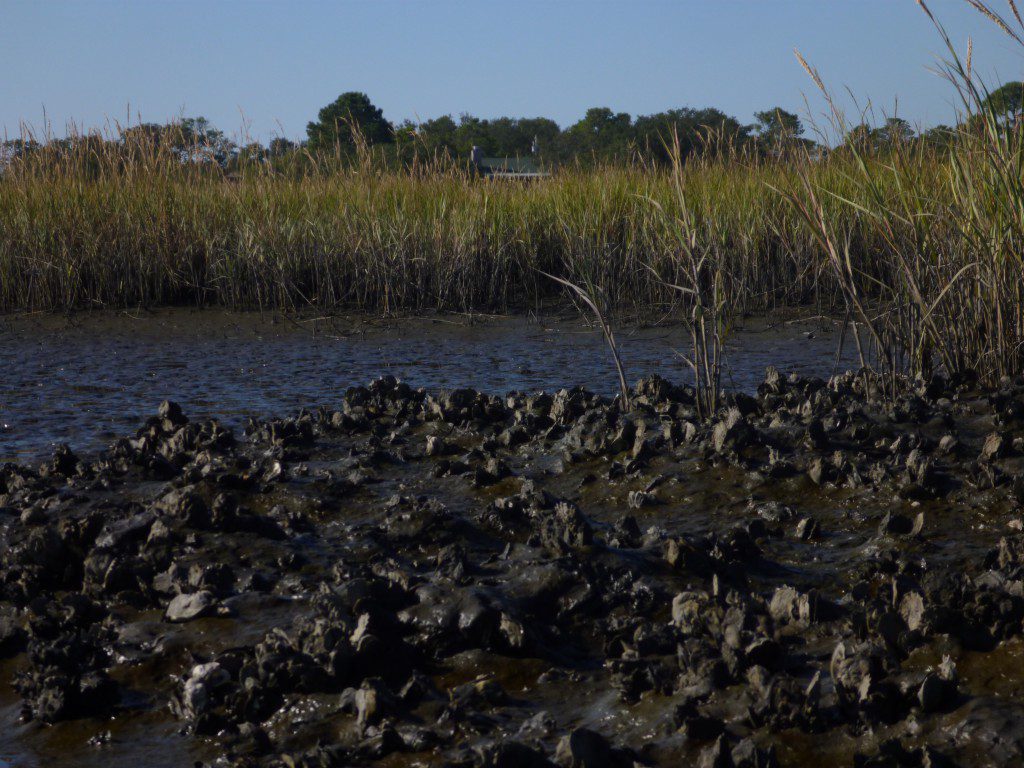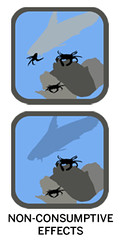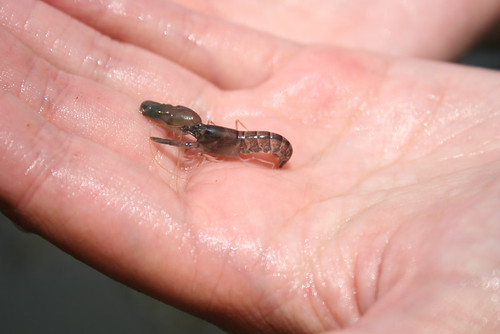Rob Diaz de Villegas WFSU-TV
Imagine you’re watching a slasher movie starring mud crabs as the protagonists. A mud crab leaves the party in the muck under the oyster reef, where the other crabs are chomping down juvenile oysters. As he pokes his head out from between a couple of shells, you hear a drumming sound and you shout at the screen “Don’t go out there!”
It’s fun to anthropomorphize some of the freaky looking residents of an oyster reef. But these are the realities of living within the ecology of fear. Predator cues have a definitive impact on how the smaller, intermediate consumers such as mud crabs behave. That’s what David Kimbro, Randall Hughes & co. are studying in Alligator Harbor and at their sites across the southeast. Large predators send certain cues to their prey- perhaps a certain way they move in the water, perhaps. When the prey species sense that the predators are near, they cease activity- including the eating of juvenile oysters. That is how large predators help maintain a healthy oyster reef- they make intermediate consumers (mud crabs) eat less of the basal species (oysters, the foundation of the oyster reef habitat).

I recently came across a study conducted by the Florida Fish and Wildlife Conservation Commission. where they used bioacoustics to learn more about how spotted seatrout spawn near Tampa Bay. They created recordings of the trout and of several other marine species, many of which David Kimbro has found on his oyster reefs. The thought occurred to me- would these sounds qualify as predator cues to mud crabs? Do they hear sounds like we do, or do they feel the vibrations of the sound waves? It’s not something David and Randall are looking at currently, and perhaps it’s not so much of a factor in how the nonconsumptive effects of predators help maintain oyster reefs. But I thought it would be neat to listen to some of the recordings made by FWC, and get an idea of what it sounds like down there. The two fish that are absent are the hardhead and sail catfish, which are the main predators in David and Randall’s oyster sites in Florida. Those are quite vocal fish.
Single Red Drum
If you ever wondered where they get their name, take a listen.
A Few Red Drum
Single Black Drum
An aggregation of Black Drum
Snapping Shrimp
Snapping shrimp have also been found on the Kimbro/ Hughes oyster reefs. The photo on the right was taken during the initial sampling of the Alligator Harbor sites, when the oyster team was setting nets and minnow traps. I remember hearing the “snapping” of this singular shrimp. In the recording above, you can hear an aggregation of shrimp, and it sounds a little like the frying of bacon.
Single Gulf Toadfish
The dominant predator of North Carolina oyster reefs, they are present in Florida’s coastal waters, even if catfish rule our local reefs. Here’s what these beautiful animals look like:



